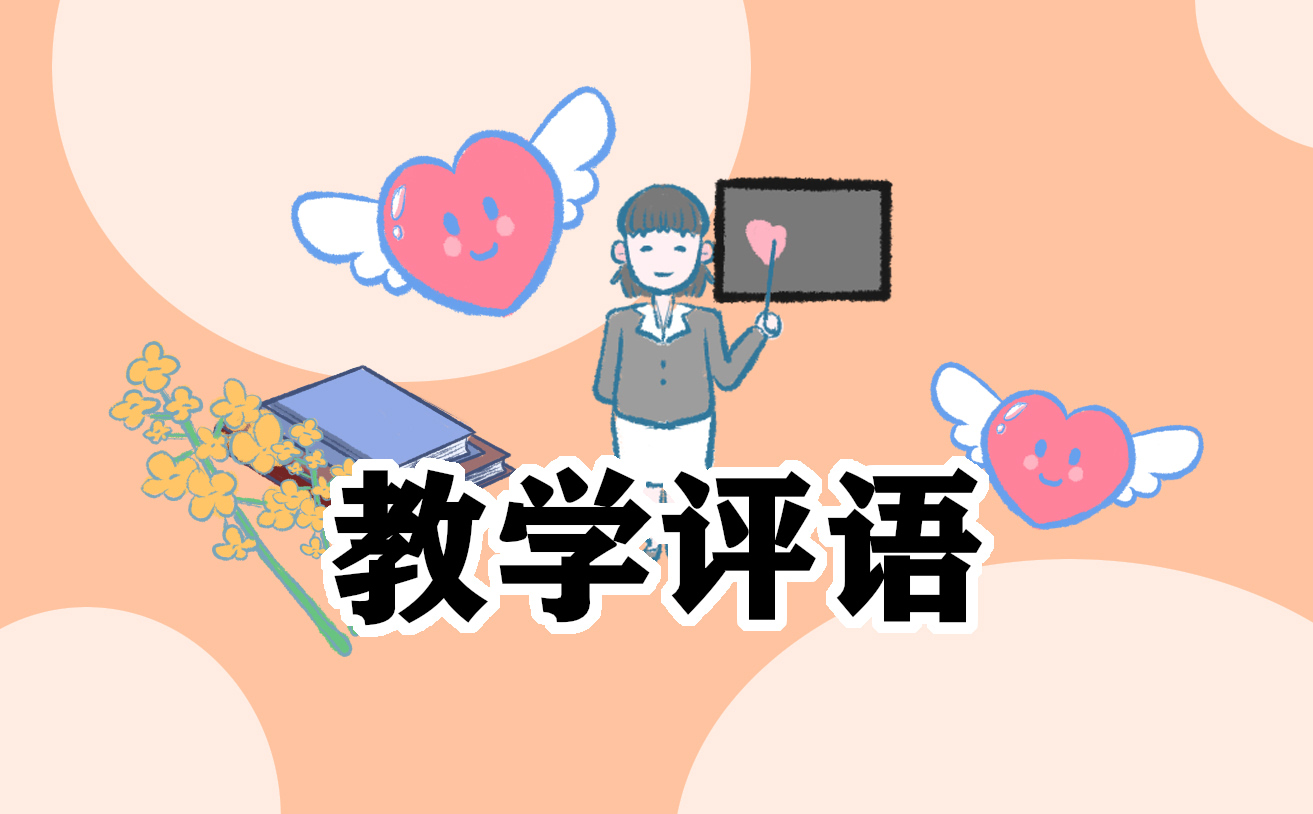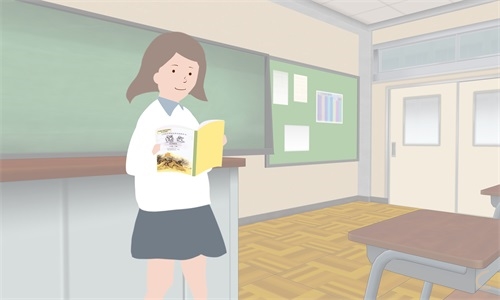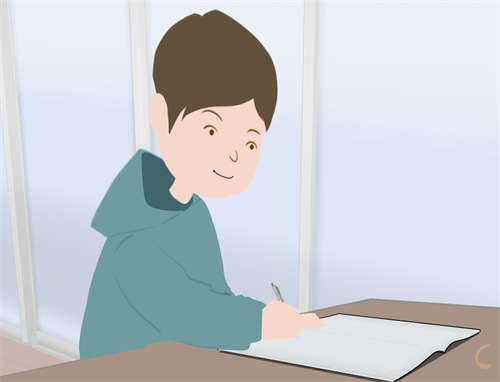英语(English)是印欧语系-日耳曼语族下的语言,由26个字母组成,是欧盟以及许多国际组织以及英联邦国家的官方语言,亦是世界上使用最广泛的语言。下面是小编为大家整理的高中英语课堂实录与教学反思5篇,希望大家能有所收获!
高中英语课堂实录与教学反思1
T:Good afternoon, boys and girls!
Ss: Good afternoon, MrGao! T:How are you?
Ss: I’m fine, Thank you, and you?
T:I’m fine,too.What’s the weather like today? Ss:It’s sunny.
T:Very good.Sit down, please!
设计意图:以学生耳熟能详的英语问候语“Good afternoon.”“How are you?”以及天气等引入课堂,吸引学生的注意力.
Step 2 New words and expressions
The students learn the new words and expressions all by themselves, and help each other, the teacher checks and helps. Now call a student to read them ,the others listen and check..
S1:(reads the new words and expressions)
The teacher teaches the new words and expressions,then the Ss read them and check each other.
设计意图:单词的教学,由学生自已拼读——互相检查帮助——教师检查辅导等方式方法改变原来单一的教师教学生跟着读,容易激发学生的积极性,且掌握得更好。真正地体现学生的自学互帮与老师的导学。
Step 3 resentation
T:Please look at the picture. What’s this in English? Ss:It is a cinema.
T: Very Good. Then would you like to go to the cinema? S2: Yes,I’d like to. S3:That’s a great idea. S4:That’s a good idea. T:What else? S5: Great idea. S6:Good idea. Theteacher takes out another picture and says this is a football match between Num.1 Middle Schooland Num.3 Middle School.They are playing football. Would you like to go to a football match?
S7:It’s a great idea.When is it? T:It’s on Saturday. S8:Let’s go on Saturday.
S9:Let’s go to the football match. S10:It’s a good idea.
T:Excellent! All of you have a good memory. Now all of you make dialogues “Would you like…? Let’s…” with your partners, then act in the front of the classroom.
(Five minutes later)
Call some groups to act out their dialogues.
设计意图:教师抓住现场的教学资源,从教师自身穿的dress入手,问“what colour is my dress?”到学生的衣服,最后到通过desk问答“what colour is it?”,从教师到学生再到物体,充分利用了现场的教学元素,生活化课堂自然生成.] Step4 Match the words with the pictures. six pictures and six words and expressions to the students. Show Work in pairs.
Step5 Listen and read 1. A game
T:Now, please look at our old friend.(Show Jackie Chan’s photo) Hello!
Ss:(huuu)Hello! T:Glad to meet you! Ss:Glad to meet you, too!
T:Listen! I am your friend. You can ask me some questions. Now, you please! S5:What is your name? T:My name is Tony. S6: How old are you? T:I’m one.
S7: what colour is it?
T:Listen! I am a brown bird. S8:Glad to meet you,Tony. T:Nice to meet you, Li Chong.
T:Now I ask questions, and you answer them. What colour am I? LiChong:Brown.
T:Very Good, Li Chong! Come here. You’re the little teacher. Read “brown”,please!
LiChong: (Point to the brown) One two begin, brown, brown
T:Thank you! Who’d like to be the little teacher? Would you like to have a try? (Some students hands up.)Li Chunlin,please.„
高中英语课堂实录与教学反思2
T:Let’s watch TV. What is this?
Ss:A butterfly.
T:Yes, it’s a butterfly.Please repeat, a lovely butterfly, a little butterfly.
T:(Show a green and red butterfly)What colour is this butterfly? Helen:It’s green and red.
T:Excellent.You will be the little teacher, come to the front. Helen:One two, begin! It’s green and red. Ss: (Read aloud after Helen) It’s green and red.
(Teacher sticks the green and red butterfly to the blackboard) T:(Show a pink and blue butterfly)What colour is this one? Bob:It’s a pink and blue butterfly.
T:Very good! Thank you. You will be the little teacher.Come here! Bob:One two, begin! It’s a pink and blue. Ss: (Read after Bob.) It’s a pink and blue.
[沿袭了单词brown教学中的little teacher,这种教学方法可谓是策略,对于激发学生的学习积极性较有效果.另外,教师在前部分教学的基础上,加大了难度,出现了butterfly,而且颜色都涉及到了两种.但于前部分内容仍旧环环相扣,循序渐进.课堂向深度,高度发展.] 2.Practice T:Today we will act one btterfly”. and .Read and do the actions after me!
T:OK! I say the words and you do the actions.
Ss:(Do the actions while singing.)
T:Iwant three students to act the butterflies. Any volunteers? Great! Come to the front. You are the lovely butterflies. All students answer my question.
T:What olour is it
Ss:(Doing actions while singing )It’s green and red. It’s pink and blue. It’s brown and yellow blue.
T:Thank you!
[唱歌是学生喜闻乐见的活动形式,教师将此部分内容安排在此处,一方面是与前面所学相挂钩,巩固所学;另一方面是在学生保持了较长时间的注意力之后,让学生得到些许放松,以便以更饱满的情绪进入下一阶段的学习,包括后面的act the butterflies,也是让学生动一动,抖擞抖擞精神.] Step5 Playing a game
T:Let’s play a game. Who wants to be my partner? Mike:Let me have a try.
T:(Throw a ball to Mike) What colour is it? Mike:It’s pink and blue.
T: Very good! I want two other pairs of students to do the game again. Toby:What colour is it? Sandra: It’s orange and black. Frank: What colour is it? Camilla:It’s brown and yellow.
[围绕butterfly,有了师生间,学生间的交流,虽然只是简短的对话,但是却为后面的Free talk做好了准备.] Step6 Free talk The teacher takes out a pen on a student’s desk, and makes a dialogue with the whole class.
T:Hello,every one! Ss:Hello,Mr.Gao!
T:What’s this in English?
(Students take out their school things and make up new dialogues by themselves. At last, Teacher chooses two groups come to the front act their dialogue.)
June: Hello! Lucy: Hello!
June:What’s your name?
Lucy:My name is Lucy.What’s your name? June:My name is June. How old are you? Lucy: I’m one. What colour is it?
June:It’s blue and pink. What colour is it?
Lucy:It’s brown and yellow. What day is it today? June: Monday.OK,bye-bye! Lucy:Bye-bye!
(Teacher asks two more pairs to act out
[学生英语表达的细胞在此完全得到释放,而且教师引导学生拿出自己的玩具,互编新对话,培养了学生在真实场景中运用英语的能力.在此部分,我们可以看到学生思维的火花得以绽放.] Step7 Magic T:Look,what colour is it? Ss:It’s blue.
T:Look,what colour is it? Ss:It’s yellow.
T: (Mixing the two colours)Look,what colour is it now? Ss:It’s green.
T:How lovely!Listen,blue and yellow is green. Ss:Blue and yellow is green.
T:Now everybody takes out your colour oil pastel. Show me yellow. Ss:Yellow-yellow-yellow.(Read and hands up) T:Show me blue. Ss:Blue-blue-blue. T:Show me red. Ss:Red-red-red.
T:Mix the colours and then find out what you get. Talk with your partner about the colours.
Ss:(Doing the experiment and then have conversations in their group.) T: What do you get from what you did just now?Tell me together. Ss: Red and blue is purple. Red and yellow is orange. T:You’re clever.
Step 8 Everyday English
T:Let’s see what’s on TV. Blue in the face.What is the meaning? Ss:蓝色的脸。
T:脸变成了蓝色说明了什么? Ss:很生气。 T:Yes. Ss: Red.
T:Yes, red.可是在英语中要表示“气得脸发红”,应该怎样说呢? Ss:Blue in the face.
T:That’s right!You should remember it.注意可不要望文生义哟!
T:Time is up.We have to say good bye!
their dialogues.)
高中英语课堂实录与教学反思3
一、歌曲导入
T:Let's sing a song.The song's name is“Let's play!Let's sing!”
评析:教学热身是英语课堂TPR教学方法的重要形式之一,教师采用歌曲来缓解学生的紧张情绪,建立轻松、和谐、民主的课堂氛围,为进一步的学习奠定了良好的基础。
二、师生问候
T:Class begins!Hello,everyone! Ss:Hello,Miss Chai ! T:How are you today? Ss:We're fine,thank you.
T:What's the weather like today? Ss:It's fine.
评析:简单的问候,可以帮助学生适应英语语感,使学生很自然地进入英语学习状态。
三、新授知识
T:A lovely day,isn't it?I have a piece of good news for you.We're going to visit the zoo.(贴出动物园的图片)Are you happy?
Ss:Yes!
T:Today we'll learn a lesson about the zoo.Please tell me.Which lesson shall we learn? Ss:Lesson 22.
T:OK!Now,let's count from one to twenty-two!
评析:在学生原有知识的基础上,以数字引入,使课题的出示别具特色,自然而不失趣味性。
T:Well,who can tell me what you can find in the zoo? Ss:Cats,dogs,birds...
T:Oh,we'll see so many animals.That's great!Now,please look here.We'll meet many animal friends today.What's this?(出示动物头饰)
S:It's a bird.
T:Oh,yes.This bird is for you!(S1带上头饰) (以下cat,dog,同上)
评析:用学生已经学过的动物引出“What's this?It's...”的新授句型。在运用中明白了句子的含义,也掌握了句子的用法,有一种润物无声的境界!
T:Now,we have three animals,they are our best friends!But look there,there is another friend.She's waiting to meet us.Who's she?(出示大熊猫玩具)
Ss:Da Xiongmao. T:Yes,it's a Da Xiongmao,but in English it's a panda.Now,please say after me,“panda”! T:Look there,I have a beautiful picture.What's this?(贴出大熊猫的图片) Ss:Panda.
T:Yes,but how to spell it?(出示单词卡) Ss:“P-A-N-D-A,panda!” T:Let's sing a song.(师生同唱并拼写,教师指图) T:What's this? Ss:It's a panda. (同法教单词tiger)
评析:运用头饰等教具,将学生喜爱的动物请到课堂上来,使学生产生了浓厚的兴趣,使抽象化的词汇学习具体化,易化了词汇这一教学难点。
T:We met so many animal friends.And would you like to go to the zoo with me?Are you ready?Let's go!OK?
T and Ss:One,two,three,go!(师生同看多媒体影片)
评析:从英语学科的实际特点出发,教者运用电脑多媒体再现课文内容,使学生犹如身临其境,培养了学生的观察能力和语言应用能力,也使课堂焕发出了生命的活力!
T:What did Ann say? Ss:“What's this?”
T:Yes,Ann说“这是什么?”,in English we should say,“What's this?”
T:Now,look at me please.What's this?It's a tiger.What's this?It's a panda.Do you understand?Please say after me.(教师手指教室内戴头饰的学生)
T:Now please point to an animal,ask and answer in pairs.(学生分组练习)
评析:这部分内容是教学的难点,教师通过TPR教学法最大限度地引导学生积极学习的兴趣,使句型操练这一枯燥的演练形式兴趣化。
T:Your pronunciations are fine.Now let's listen to the tape and read after it.(Listen and speak.)
评析:在英语教学中,原声语音的模仿是必不可少的步骤,有利于培养学生优美的语感,为英语的终身学习打下良好的基础。
T:We all like animals,but the zoo isn't the animals hometown.Where is their real hometown?
S:大自然。
T:Yes!Let's look at the animal.OK?(观看多媒体影片) T:Do you like animals? Ss:Yes!
T:The earth belongs to both animals and human beings.We should live peacefully together. We should try to give them a better living environment,and protect them from being hurt.Do you think so?
Ss:Yes!
T:OK!Let's begin from now on!
T:The time is up.Good-bye,everyone!
评析:结束语将知识性与思想性融为一体,既强调了本课知识的重点,又对学生进行了思想教育,使学生对所学内容有了一个更高层次的认识,使英语教学的目的得以充分的发挥。
高中英语课堂实录与教学反思3
Step 1 Greetings
T: Good afternoon, boys and girls!
Ss: Good afternoon, Miss Wang!
T: How are you?
Ss: I’m fine, Thank you, and you?
T: I’m fine, too. What’s the weather like today?
Ss: It’s sunny.
T: Very good. Sit down, please!
设计意图:以学生耳熟能详的英语问候语 “ Good afternoon.” “ How are you?” 以及天气等引入课堂,吸引学生的注意力.
Step 2 New words and expressions
The students learn the new words and expressions all by themselves, and help each other, the teacher checks and helps. Now call a student to read them , the others listen and check..
S1:(reads the new words and expressions)
The teacher teaches the new words and expressions, then the Ss read them and check each other.
设计意图:单词的教学,由学生自已拼读——互相检查帮助——教师检查辅导等方式方法改变原来单一的教师教学生跟着读,容易激发学生的积极性,且掌握得更好。真正地体现学生的自学互帮与老师的导学。
Step 3 Presentation
T: Please look at the picture. What’s this in English?
Ss: It is a cinema.
T: Very Good. Then would you like to go to the cinema?
S2: Yes, I’d like to.
S3: That’s a great idea.
S4: That’s a good idea.
T: What else?
S5: Great idea.
S6: Good idea.
The teacher takes out another picture and says this is a football match between Guqiao Middle School and Yanghe Middle School. They are playing football. Would you like to go to a football match?
S7: It’s a great idea. When is it?
T: It’s on Saturday.
S8: Let’s go on Saturday.
S9: Let’s go to the football match.
S10: It’s a good idea.
T: Excellent! All of you have a good memory. Now all of you make dialogues “Would you like…? Let’s…” with your partners,then act in the front of the classroom.
(Five minutes later)
Call some groups to act out their dialogues.
设计意图:教师抓住现场的教学资源,从教师自身穿的dress入手,问 “ what colour is my dress?” 到学生的衣服,最后到通过desk问答 “ what colour is it?”,从教师到学生再到物体,充分利用了现场的教学元素, 生活化课堂自然生成.]
Step4 Match the words with the pictures.
Show six pictures and six words and expressions to the students. Work in pairs.
Step5 Listen and read
1. A game
T: Now, please look at our old friend. (Show Jackie Chan’s photo)
Hello!
Ss: (huuu) Hello!
T: Glad to meet you!
Ss: Glad to meet you, too!
T: Listen!I am your friend. You can ask me some questions. Now, you please!
S5: What is your name?
T: My name is Tony.
S6: How old are you?
T: I’m one.
S7: what colour is it?
T: Listen! I am a brown bird.
S8: Glad to meet you, Tony.
T: Nice to meet you, Li Chong.
T: Now I ask questions, and you answer them. What colour am I?
Li Chong: Brown.
T: Very Good, Li Chong! Come here. You’re the little teacher. Read “brown”, please!
Li Chong: (Point to the brown) One two begin, brown, brown
T: Thank you! Who’d like to be the little teacher? Would you like to have a try?
(Some students hands up.) Hu Lingli, please.…
设计意图:整个过程,学生都处在教师创设的情境中,围绕 “ Brown Bird”展开教学.通过让学生提问brown bird到brown bird提问学生,操练了英语基本用语, 给学生开口说英语提供了机会。 教师还让学生尝试当小老师,
带领全班同学一起学习,这既是对该生回答正确的肯定, 让优生带动了全班同学,又充分调动了其他学生学习英语的热情.
Step 4 Presentation and Practice
1. Presentation
T: Let’s watch TV. What is this?
Ss: A butterfly.
T: Yes, it’s a butterfly. Please repeat, a lovely butterfly, a little butterfly.
T: (Show a green and red butterfly) What colour is this butterfly?
Helen: It’s green and red.
T: Excellent. You will be the little teacher, come to the front.
Helen: One two, begin! It’s green and red.
Ss: (Read aloud after Helen) It’s green and red.
(Teacher sticks the green and red butterfly to the blackboard)
T: (Show a pink and blue butterfly)What colour is this one?
Bob:It’s a pink and blue butterfly.
T: Very good! Thank you. You will be the little teacher. Come here! Bob: One two, begin! It’s a pink and blue.
Ss: (Read after Bob.) It’s a pink and blue.
(Teacher sticks the pink and blue butterfly to the blackboard. Do the same to the brown and yellow butterfly.)
[沿袭了单词brown教学中的little teacher,这种教学方法可谓是策略,对于激发学生的学习积极性较有效果.另外,教师在前部分教学的基础上,加大了难度,出现了butterfly, 而且颜色都涉及到了两种.但于前部分内容仍旧环环相扣,循序渐进.课堂向深度,高度发展.]
2. Practice
T: Today we will learn a new song: “A butterfly”. Stand up. Read and do the actions after me!
T: OK! I say the words and you do the actions.
Ss: (Do the actions while singing.)
T: I want three students to act the butterflies. Any volunteers? Great! Come to the front. You are the lovely butterflies. All students answer my question.
T: What colour is it?
Ss: (Doing actions while singing )It’s green and red. It’s pink and blue. It’s brown and yellow blue.
T: Thank you!
[唱歌是学生喜闻乐见的活动形式,教师将此部分内容安排在此处,一方面是与前面所学相挂钩,巩固所学;另一方面是在学生保持了较长时间的注意力之后,让学生得到些许放松,以便以更饱满的情绪进入下一阶段的学习,包括后面的act the butterflies,也是让学生动一动,抖擞抖擞精神.]
Step 5 Playing a game
T: Let’s play a game. Who wants to be my partner?
Mike: Let me have a try.
T: (Throw a ball to Mike) What colour is it?
Mike: It’s pink and blue.
T: Very good! I want two other pairs of students to do the game again.Toby: What colour is it?
Sandra: It’s orange and black.
Frank: What colour is it?
Camilla: It’s brown and yellow.
[围绕butterfly,有了师生间,学生间的交流,虽然只是简短的对话,但是却为后面的Free talk做好了准备.]
Step 6 Free talk
The teacher takes out a pen on a student’s desk, and makes a dialogue with the whole class.
T: Hello, every one!
Ss: Hello, Miss Wang!
T: What’s this in English?
(Students take out their school things and make up new dialogues by themselves. At last, Teacher chooses two groups come to the front act their dialogue.)
June: Hello!
Lucy: Hello!
June: What’s your name?
Lucy: My name is Lucy. What’s your name?
June: My name is June. How old are you?
Lucy: I’m one. What colour is it?
June: It’s blue and pink. What colour is it?
Lucy: It’s brown and yellow. What day is it today?
June: Monday. OK, bye-bye!
Lucy: Bye-bye!
(Teacher asks two more pairs to act out their dialogues.)
[学生英语表达的细胞在此完全得到释放,而且教师引导学生拿出自己的玩具,互编新对话,培养了学生在真实场景中运用英语的能力.在此部分,我们可以看到学生思维的火花得以绽放.]
Step 7 Magic
T: Look, what colour is it?
Ss: It’s blue.
T: Look, what colour is it?
Ss: It’s yellow.
T: (Mixing the two colours) Look, what colour is it now?
Ss: It’s green.
T: How lovely! Listen, blue and yellow is green.
Ss: Blue and yellow is green.
T: Now everybody takes out your colour oil pastel. Show me yellow. Ss: Yellow-yellow-yellow. (Read and hands up)
T: Show me blue.
Ss: Blue-blue-blue.
T: Show me red.
Ss: Red-red-red.
T: Mix the colours and then find out what you get. Talk with your partner about the colours.
Ss: (Doing the experiment and then have conversations in their group.) T: What do you get from what you did just now? Tell me together. Ss: Red and blue is purple. Red and yellow is orange.
T: You’re clever.
Step 8 Everyday English
T: Let’s see what’s on TV. Blue in the face. What is the meaning? Ss: 蓝色的脸。
T:脸变成了蓝色说明了什么?
Ss: 很生气。
T: Yes. 如果中国人很生气,脸变成什么颜色?
Ss: Red.
T: Yes, red. 可是在英语中要表示“气得脸发红”,应该怎样说呢? Ss: Blue in the face.
T: That’s right! You should remember it.注意可不要望文生义哟! T: Time is up. We have to say good bye!
Ss: Bye-bye! Miss Bai. Thank you!
[此部分内容,虽然是课堂的尾声,但却是此课的精彩部分所在.对于本课所学颜色类单词,教师精心设计了一个小活动和一个习惯用语的渗透.一个调色盘的游戏, 艳丽的色彩足以吸引学生的眼球,从英语课堂中培养了学生的艺术细胞;还有从 “ Blue in the face.”形象地告诉学生 “气得脸发红”就用 “Blue in the face”.表达,还告诉了学生不要望文生义.在此,英语课堂已完全突破了教材的限制,但又能立足于课堂,教师独具匠心的设计极为巧妙,值得学习.]
高中英语课堂实录与教学反思4
一、 歌曲导入:
T: Let’s sing a song. The song’s name is 《One little finger》. [评:教学热身是英语课堂TPR教学方法的重要形式之一,教师采用歌曲来缓解学生的紧张情绪,建立轻松和协民主的课堂氛围,为进一步的学习奠定了良好的基础。]
二、 师生问候:
T: Class begins! Hello, everyone! Ss: Hello, Miss Cai! T: How are you today? Ss: We're fine, thank you. T: What’s the weather like today? Ss: It's fine. [评:简单的问候,可以帮助学生适应英语语感,使学生很自然地进入英语学习状态。]
三、 新授知识:
T: A lovely today, isn't it? I have a good news for you. We're going to visit the zoo. Are you happy? Ss: Yes! T: Today we'll learn a lesson about the zoo. Please tell me. Which lesson shall we learn? Ss: Lesson9 T: OK! Now, let’s count from one to nine! (教师同时书写板书Lesson9。) [评:在学生原有知识的基础上,以数字引入,使课题的出示别具特色,自然而不失趣味性。] T: Well, who can tell me what you can find in the zoo? Ss: Monkeys, tigers, and hippos… .
T: Oh, we’ll see so many animals. That’s great! Now, please look here. We'll meet many animal friends today. What’s this?(出示动物头饰) T: Do you have a monkey? S: No, I don’t.
T: Oh, Don’t worry. This monkey is for you! (S1带上头饰) (以下lion, hippo, tiger, panda, elephant, dog, goat同上)
T: Now, we have so many animals, they are our best friends! But look there, there is another friend. She's waiting to meet us. Who's she?(指向长颈鹿玩偶) Ss: Changjinglu. T: Yes, it’s a Changjinglu, but in English it's a giraffe. Now, please say after me, “giraffe”! T: Look there, I have a beautiful picture, what’s this?(贴出长颈鹿图) Ss: Giraffe. T: Yes, but how to spell it?(出示单词卡) Ss: “g-i-r-a-f-f-e ”
T: Let’s sing a song, make a giraffe in the air.(师生同唱并拼写,教师指图) T: What’s this?
第 1 页 共 15 页 Ss: It’s a giraffe.
[评:运用头饰这一简单的教具,将学生喜爱的动物请到了课堂上来,使学生产生了浓厚的兴趣,使抽象化的词汇学习具体化,易化了词汇这一教学难点。] T: We met so many animal friends. And would you like to go to the zoo with Tutu? Are you ready? Let's go! OK?
T and Ss: One, Two, Three, go.(师生同看多媒体投影)
[评:从英语学科的实际特点出发,教者运用电脑多媒体再现课文内容,使学生有如身临其境,培养了学生的观察能力和语言应用能力。] T: What did Jack say? Ss: "Look there!" T: Yes, Jack说“看那儿”,in English we should say, "Look there." T: Now, look at me please. Look there! It’s a monkey. Look there! It’s a hippo. Do you understand? Please say after me. (教师手指教室内戴头饰的学生)
T: Now, let’s sing a song 《One little finger 》, but this time please sing that like me.(师生共同唱并手指相应的动物头饰)。
T:Now please point to an animal, ask and answer in pairs. (学生分组练习)
T:Well, please look at me please. Look there!(指向猴子) It’s a monkey. I like monkeys(拿出心形单词卡)Do you understand? What does it mean in Chinese? Ss:Xihuan. T: Yes. Please follow me. I like monkeys. (板书: like monkeys)
T: OH. Now look there. There is a “s ”, but why? (拿出单数卡)There is a monkey. Only one! So there’s no “s”. (拿出复数卡)Wow, there are so many monkeys, then, we must add an “s”(利用多张卡片领学生练习这区分单词的单复数) T: Now, every one make a sentence like me, please. Ss: I like monkeys. I like elephants…
T: Well, please listen to me carefully. Do you like monkeys? If you like, you can say, “Yes, I do.”(师生练习句型) T: Let’s play a game. I’ll ask you “Do you like …?” If you like it, please stand up. [评:这部分内容是教学的难点,教师通过TPR教学法最大限度地引发学生积极学习的兴趣,使句型的操练这有一枯燥的演练形式兴趣化。] T: Your pronunciations are fine. Now let’s listen to the tape and read after it. (Listen and speak) [评:在英语教学中,原声语音的模仿是必不可少的步骤,有利于培养学生优美的语感,为英语的终身学习打下良好的基础。] T: Ok, good job! But I'd like to know which is your favorite animal, so let's ask each other. (由学生进行调查练习) [评:采用采访形式,设计得情趣盎然,生动活泼,突出了教师的主导地位,同时学生的主体作用也得到了更大限度的发挥,学生争先恐后参与活动,成为活动的主人,他们在轻松、民主的氛围中得到了知识的巩固,得到了英语语言交际能力的锻炼,提高了交际性能力,从而达到了良好的教学反馈。] T: We all like the animals, but the zoo isn't really the animals hometown. Where is their real hometown? S: 大自然。
高中英语课堂实录与教学反思5
从事英语教学五年, 笔者接触两种不同新教材----人教版和人教新课标.虽然执教时间不长,却颇有感触.特别是九月份开始接触人教新课标这本教材,深深感觉到教学永远是形影不离的.高中英语教学给我的印象是: 与时俱进;一气呵成;环环相扣,步步为赢;师生互动,教学相长.学生永远是主体,教师是渔夫,授学生与渔.
作为授渔者,要了解授渔的渔具.教师首先必学对新教材有深刻的认识,对其指导精神了如指掌.在笔者眼里,新教材本着”以人为本”,要求学生主动参与,主动探究学习,具有以下特点: 话题与时俱进,语言地道自然;;教学理念先进,倡导体验学习;引导探究学习,编排体系合理;设计图文并茂,留给创造空间;单元生词大幅增加,语法进度大步加快.
作为教授者,要了解授渔的对象.笔者执教于一所县城中学.大多数学生来自农村,往往都具备这样的特征:英语基础薄弱,底子差,深受”语法”为中心的传统教学的影响,只关注语法和单词用法, 听力口语零阶段. 同时,由于条件的限制,大多数学生见识少而学习态度不端正,认为学习英语就是考试会做题.总之,对英语学习兴趣不高,缺乏学习方法且自尊心特强.
针对这些情况,笔者在教学过程中采取了以下尝试:
一. 教学过程中, 注重常规教学中求创新,注意高一年级与初中的衔接过渡:
高一新学期开始,我们可以通过入学考试等了解学生的大致水平,及时给学生弥补初中的缺漏知识。利用开学后一月左右的时间从语言、词汇、句型、语法等方面帮助学生系统复习。尽快使学生适应高中英语教学,具体做法是:培养学生课前预习、课后复习的良好学习习惯;坚持尽量用英语授课,要求并鼓励学生用英语思考问题、回答问题;根据高考要求,从高一年级开始就培养学生的阅读能力,教会学生一些阅读技巧,养成良好的阅读习惯;另外,课后加强与学生接触,尽快和学生熟悉起来。
二. 重视语言知识的教学,不玩花架子
1. 重视培养学生良好的学习习惯(1)记的习惯(2)读的习惯(3)写的习惯
2. 高中英语教学要始终贯彻交际性原则,强化学生主体意识: “让游泳者到水中去。”这是交际语言教学理论的思想核心。语言学家毛鲁(ke morrow)曾说过:“to learn it, do it… only by practising communicative activities can we learn to communicate.”贯彻交际性原则也就是要把教学活化为实际,我的做法是:
⑴.建立“课前五分钟会话”,培养课堂交际氛围。如一进课堂我说:“it’s nice to see you again. / it’s fine today, isn’t? / how are you today?”星期一上课问:“did you have a good time at the weekend?”学生会作出不同的回答,引出更多的对话,从而达到交际的目的。
⑵.如果有可能的话,尽量坚持让学生作duty report锻炼学生开口的好方法。具体是让当天值日生在讲台前向同学们介绍当天日期、天气、出勤等情况,也可以让他们讲故事,并允许他们随意挑选同学回答问题。
⑶.适当让学生表演对话或课文内容。针对近期所学内容,布置学生课后进行讨论排练,然后再搬上课堂表演。
⑷.定期举办英语课外活动,如:办英语小报,举行英语晚会。这些活动不仅能够丰富学生第二课堂,激发学生学习兴趣,而且能充分调动学生开口参与交际的积极性。
3. 培养学生的自学能力: 只有通过辅导学生掌握一套科学的学习方法,并培养学生的自学能力,才能使学生的学习积极性和主动性得以发挥。我的具体做法是:培养学生的预习能力、各种方法掌握英语基本知识的能力、学生自己整理所学知识的能力。另外,自学能力的提高还得益于学生课外大量的独立的阅读,于是高一我们就要求学生人人尽量有一本英汉词典作为工具书,让他们勤查字典。
4. 认真抓好英语早读:外语教师下班级认真抓早读课,除了对学生起督促鼓励的作用外,还能及时发现学生的发音、朗读、理解课文及语法概念上存在的问题,并及时给予纠正、示范和指导,从而掌握了学生实际水平的第一手资料。这样就可以有针对性地制定各阶段的教学计划及具体教学安排,有利于提高教学质量。早读课不像上正课那样规矩严格,师生之间的交流也不拘形式,这样有助于密切师生感情。而这时情感的产生往往在激发学生学习外语兴趣方面起着积极的作用,同时也是推动学生学习的动力。从心理学的角度来说,早晨是人的记忆高峰期。在这个时期明读外语、拼读单词、背诵课文或练习语音语调等,能在短时间内收到事半功倍的效果。
通过以上的做法,学生的兴趣明显增强,信心也增强了,学习变得主动了.然而在教学的过程中,笔者也对教材的使用存在有不少困惑:
1.生词量大,学生难以掌握. 新课标要求的词汇量: 修完1-5本必修课本, 词汇量为2400-2500个,达到七级要求; 达到八级要求, 即修完1-8本教材, 词汇量要求为3300个; 九级要求的词汇量是4500个. 鉴于这样的安排,每个单元的词汇基本是在50-60之间。对于我们农村中学的学生来说,难度颇大。
2.听力材料多而长,设题较难不便使用。新教材每个单元中的听力内容比较多,连同练习册中的至少有三个听力材料与练习,尽管所选材料都与本单元话题密切相关,但是总体难度都很大。我们曾在教学第一单元时,按照要求给学生听第六页的短文,后让学生完成相应练习,结果学生普遍没听明白,不但浪费了一节课,还容易使学生丧失信心。
3.workbook部分包括有利于巩固或进一步提高知识与技能的练习和活动,容量几乎和主教材相当。有的教师惟恐不周,为了赶进度,只好加班加点,走马观花过一遍。有的教师以课时有限、学生消化不了为由放弃workbook。只有少数教师根据需要有选择地使用练习册的内容。
4.教学内容多,学生积极性不高。学生进入高中,对新学期的生活充满期待,对英语学习也是如此,无论是重点班还是普通班,刚开始都是精神饱满,信心百倍。可是一两个星期的教学过后,发现学生们的精神状态开始逐渐走下坡路,究其原因:1、教材难度大,内容多,应接不暇;2、课堂所学的内容似乎和考试脱节,试题不会做,没有成功感;3、学生本身意志力薄弱,碰到困难极易退缩.
对新教材的使用的反思与实践:
合理使用教材,对教材进行必要的重组. 新课标对教材的使用提出如下建议: 教师要善于结合实际的需要,灵活和有创造性地使用教材, 对教材内容, 编排顺序和教学方法等方面进行适当地取舍或调整。实际操作过程中, 对教材的使用主要作了相应调整:
1)删减难度教大的内容主要是listening, speaking, 以及练习册中的project 等等; project因为需要学生走出课堂,对某个问题进行研究探讨,甚至需要收集资料,参与社会实践才能完成,这对于农村寄宿制的学校,很难做到。而listening and speaking 则是鉴于学生的英语实际水平,大部分根本无法开展。于是选用英语辅导报上的听力材料或者英语歌曲等代替,以此提高学生的听力水平。另外关于写作,因为每个单元写作任务比较多,也只能是有所筛选着用或者不用,取而代之的是一些常见的句型背诵以及课文精彩段落背诵。
2)调整教学顺序每个单元的教学我们一般需要7个课时,通常是:warming up。
高中英语课堂实录与教学反思相关文章:
★ 英语课堂教学反思
★ 关于英语教学反思
★ 英语教学反思范文
★ 英语教学反思简短记录五篇
★ 高中英语教学总结1500字优秀范文五篇
★ 高三英语教师教学反思
★ 高中英语学习心得体会5篇
★ 高三英语老师个人教学总结5篇
★ 中学英语教师实习报告2000字
★ 高中英语学习方法反思与推荐
上一篇:一年级语文影子教学实录
下一篇:统编版一年级上册项链教学实录






